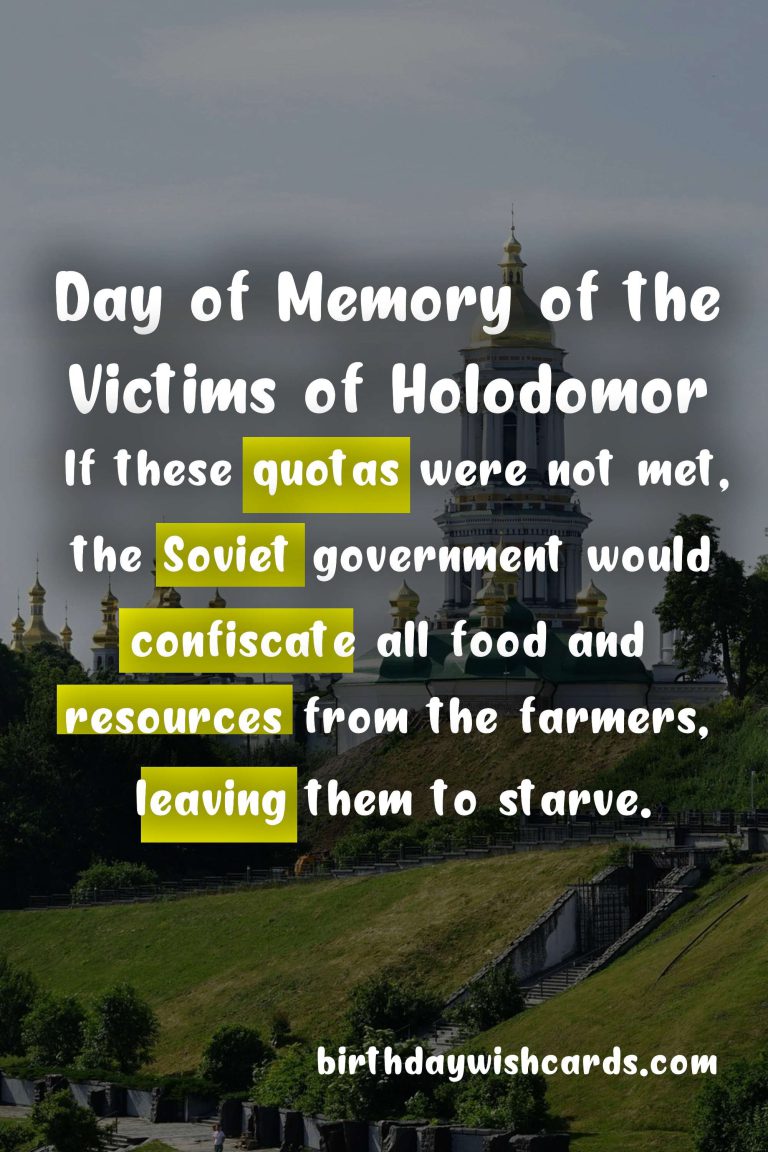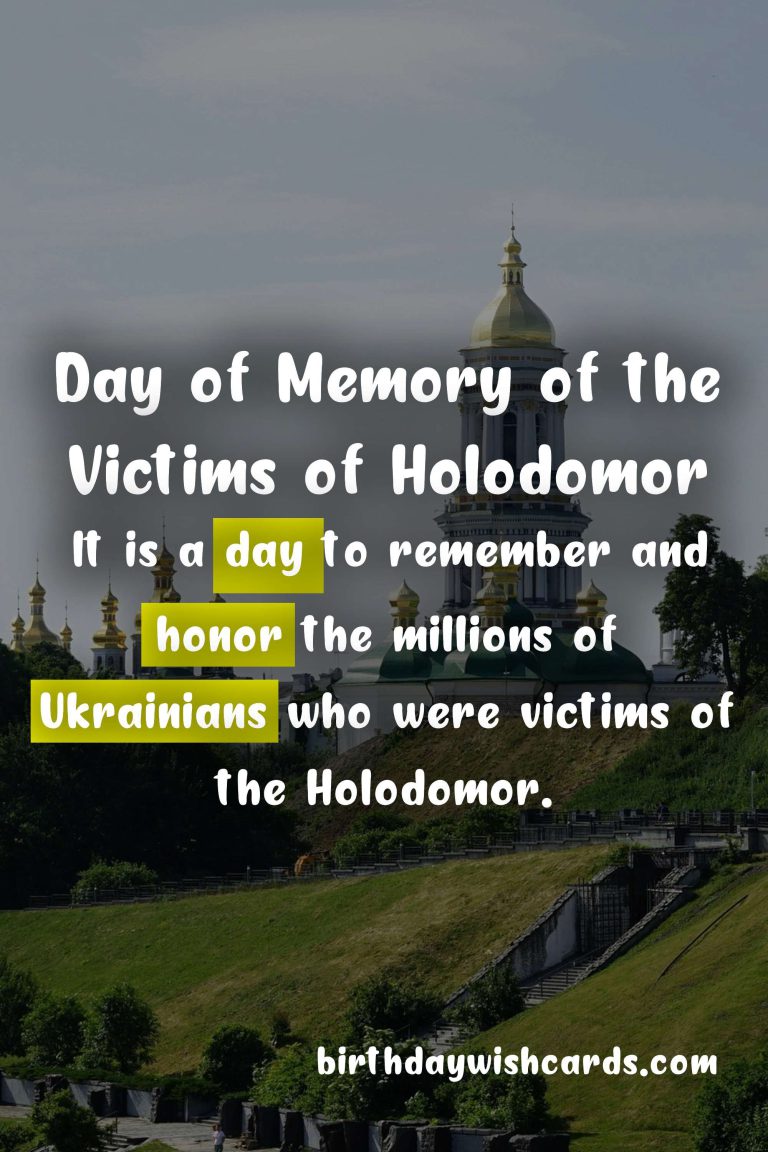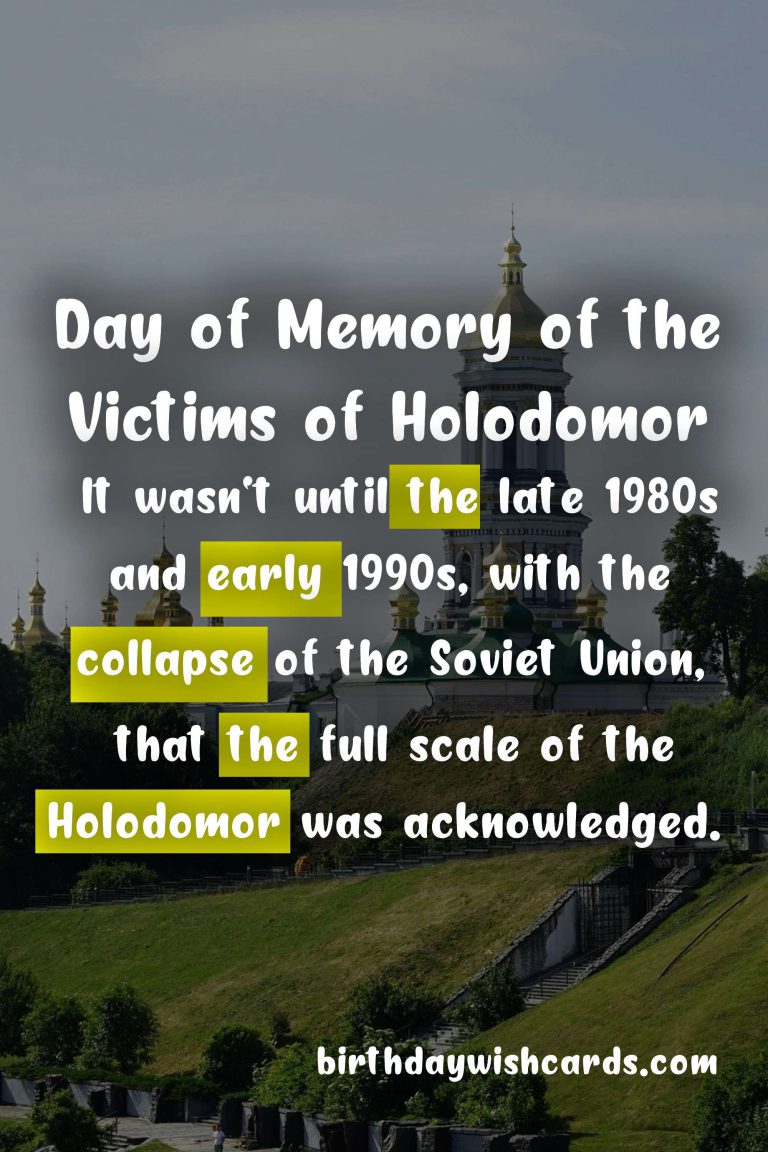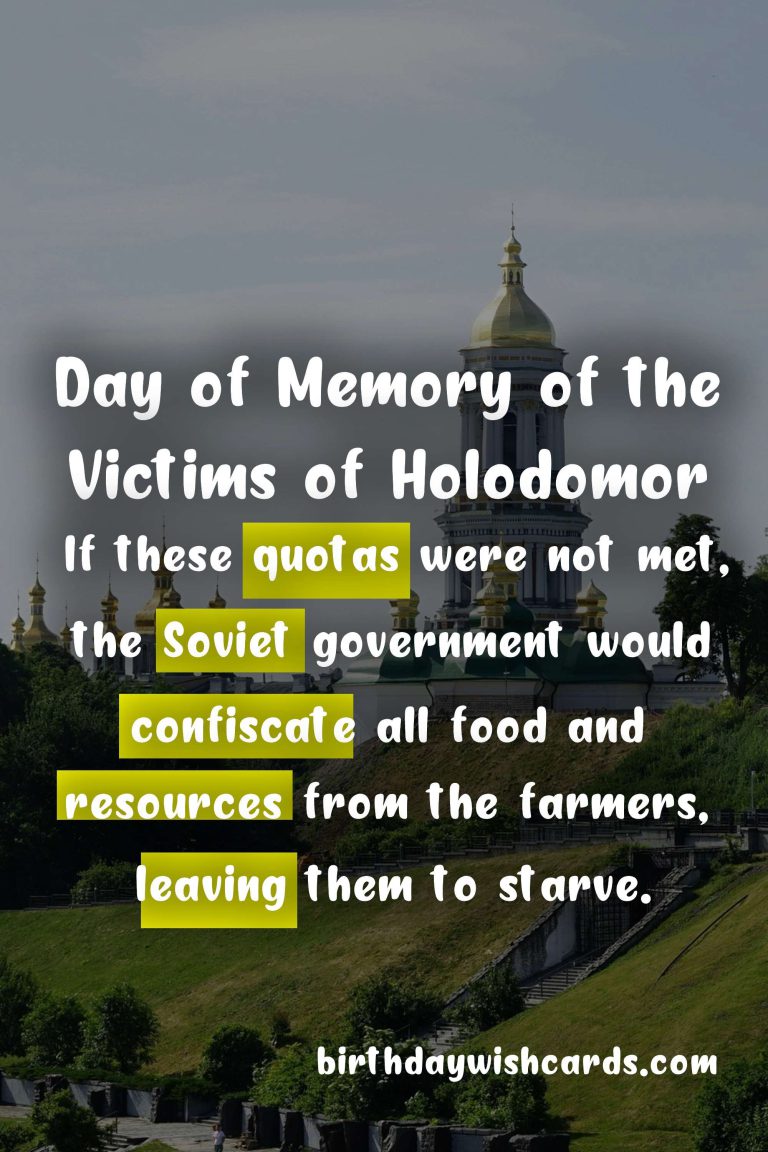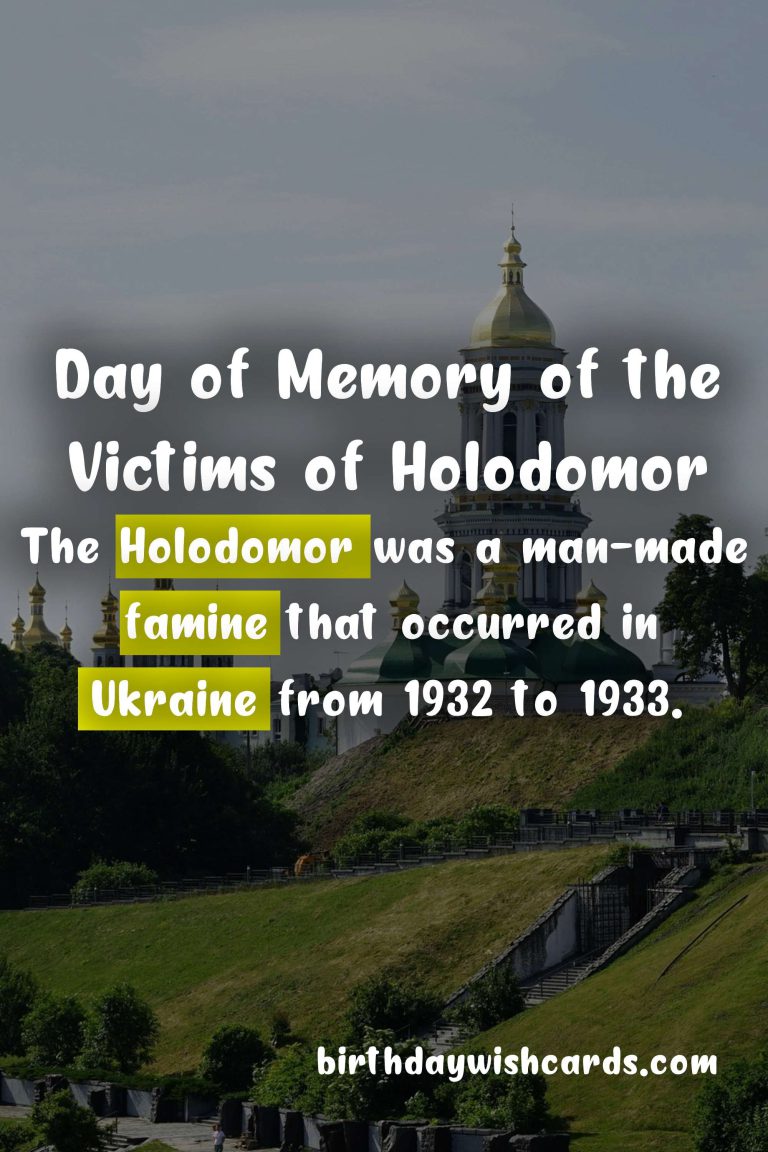
November 7 – Day of Memory of the Victims of Holodomor
November 7 holds significant historical weight, but its meaning varies greatly depending on the perspective. While it marks the anniversary of the October Revolution in Russia, in Ukraine, this date is solemnly observed as the Day of Memory of the Victims of the Holodomor. This day is dedicated to remembering and honoring the millions of Ukrainians who tragically lost their lives during the Holodomor, also known as the Great Famine.
Understanding the Holodomor: A Man-Made Tragedy
The Holodomor was a catastrophic famine that struck Ukraine between 1932 and 1933, during the Soviet Union’s rule under Joseph Stalin. Unlike natural famines caused by environmental factors, the Holodomor was a man-made disaster, widely recognized as an act of genocide targeting the Ukrainian people and their cultural identity.
Estimates of the death toll vary, but historians agree that between 3 to 7 million Ukrainians perished due to starvation and related causes. The famine was the result of a combination of oppressive Soviet policies that devastated the agricultural backbone of Ukraine.
The Policies Behind the Famine: Collectivization and Dekulakization
On November 7, 1932, the Soviet government aggressively implemented a policy called collectivization in Ukraine. This policy mandated the seizure and consolidation of all privately owned farms into large, state-controlled collective farms. The aim was to increase agricultural output and enforce state control over food production, but the consequences were catastrophic.
Farmers were assigned impossibly high grain production quotas. Failure to meet these quotas resulted in the confiscation of all food supplies and resources by Soviet authorities, effectively condemning many families to starvation.
Alongside collectivization, the Soviet regime pursued dekulakization — a brutal campaign targeting so-called “kulaks,” or wealthier, more successful farmers. These individuals were arrested, deported, or executed as enemies of the state, eliminating skilled farmers and destabilizing local agricultural knowledge and productivity.
The Human Cost: Starvation and Suffering
The combined effects of collectivization and dekulakization triggered a devastating famine. Ukrainian peasants faced extreme hunger, with many forced to survive on grass, tree bark, and in some tragic cases, resorted to cannibalism. The Soviet government further tightened control by restricting the movement of people, preventing starving Ukrainians from fleeing to other regions in search of food relief.
The famine was not only a physical catastrophe but also an assault on the very fabric of Ukrainian society. The Soviet authorities destroyed Ukrainian cultural institutions, including churches, schools, and community centers, and imposed Russian as the official language in an attempt to erase Ukrainian identity.
Recognition and Remembrance
For decades, the scale and severity of the Holodomor were suppressed and denied by Soviet authorities. It was only in the late 1980s and early 1990s, amid the collapse of the Soviet Union, that the full reality of the famine was acknowledged internationally.
Since then, November 7 has been officially designated in Ukraine as the Day of Memory of the Victims of Holodomor. This day serves as a powerful reminder of the millions of lives lost and the resilience of the Ukrainian people.
How Ukrainians Commemorate the Holodomor
Every year on November 7, Ukrainians come together to honor the memory of those who died during the Holodomor. Candlelight vigils and memorial ceremonies are held across the country, serving as poignant acts of collective mourning and remembrance.
In addition to public gatherings, museums and cultural institutions organize exhibitions and educational programs to raise awareness about the Holodomor’s impact on Ukraine’s history and heritage. These initiatives aim to ensure that future generations understand the depths of this tragedy and the importance of preventing such atrocities from ever occurring again.
The Importance of Remembering the Holodomor
Remembering the Holodomor is crucial not only for honoring the victims but also for acknowledging the historical truth about this dark chapter. It stands as a testament to the resilience of the Ukrainian people and a warning against the dangers of totalitarian regimes and policies that dehumanize and destroy populations.
By commemorating this day, Ukraine and the global community reaffirm their commitment to human rights, justice, and the prevention of genocide worldwide.
For a detailed historical account of the Holodomor and its devastating effects, visit the United States Holocaust Memorial Museum. Additionally, the Encyclopaedia Britannica’s article on the Holodomor offers comprehensive insights into this tragic famine.
Visual Remembrance
The following images serve as a visual reminder of the Holodomor’s impact and the ongoing efforts to remember its victims:



